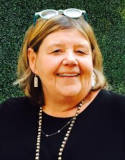COVID-19 in 2020 America: My Three-Month Projection

COVID-19 IN 2020 AMERICA: MY THREE-MONTH PROJECTION
1. The fissure between the two primary camps with opposing agendas and clashing priorities will continue to rupture. This widening divide is exacerbated because opposing groups now align largely along political and philosophical lines.
2. Since mid-March, *health/safety* advocates have driven virtually all federal, state, and local policy. However, those who prioritize *economy/employment* have increased in number and in the volume of their discontent (i.e., 10 screamers are far noisier than 100 who remain silent). As public patience gradually wears thin, and many regions of the country seem (relatively) unaffected, collective anxiety will worsen.
3. Growing economic hardship caused by the shutdown disproportionally impacts the middle class and the poor. Flames of revolt, increasingly fanned by conspiracy theorists and the constant drumbeat of right-wing media, make current policies unsustainable. This means social distancing guidelines are now being relaxed as America begins to “reopen.” While this is a reckless public policy, and potentially catastrophic given what we know (and we don’t know) about the pandemic, it’s just as inexorable. Ordering people to prepare for a hurricane when they don’t see clouds and rain is ineffectual.
4. Unless some economic sectors are permitted to reopen, particularly those impacting small businesses and self-employed contractors (which number in the millions), acts of rebellion once considered unpalatable to most average citizens will increasingly gain support. Justified or not, resentment against social distancing has spread from a few extremists into the mainstream. Personal financial interests will prevail in the debate and will win easily in most communities. Largely shafted or shortchanged by the federal economic bailout, and eligible for only limited state relief, those at risk for losing their businesses will slowly trickle over to the other side of the debate. This has already happened in rural communities and is now occurring in suburbia. Aside from a few “hot spots,” even many cities will decide to take their chances. It remains to be seen if we end up paying a much higher cost down the road as collective impatience leads to compromises in health/safety.
5. Perceptions will be shaped by three primary factors: (1) Preconceptions (2) Source of Reporting (3) The Inevitability of Changing Attitudes
— Our preconceptions about the threat posed by the virus combined with our political affiliation will mostly guide how we react to future events, both good and bad. In fact, I expect these preconceptions will boll weevil disparate camps even further apart.
— If 200,000 Americans are dead by summer’s end, which is a quite plausible projection, is that good news or bad news? Your answer depends on where we get our news and how data is packaged. The Trump Administration will certainly spin this as good news. Anti-Trump forces will point to America’s death toll as the highest in the world (likely) as evidence of failed leadership.
— Our attitudes about risk, sickness, the aged, and even death are changing. Should you doubt this, think again. In war, the value of life becomes cheaper. What we never thought tolerable before, becomes not only acceptable but “normal.”
6. Perceptions about the elderly will be the starkest new reality. Older people will be viewed as more disposable, especially by the young and by a medical system that may be forced to make tough choices as to the priorities of health care (not just COVID-19 related, but overall as resources become stretched). Nursing homes disproportionally feeling the impacts of the pandemic will fade from crisis mode. But what would happen if the virus begins hitting nurseries and schools? Such a shift in the preponderance of victims would produce a radical shift in collective perception, and would certainly not be tolerated by any segment of the population. The key here is to watch which age groups (and racial groups to a lesser extent) make up the victims (minorities are getting harder hit at the moment).
7. Pursuant to #5 and #6 (above), I can’t overemphasize this enough. I’m deeply worried deeply about our collective de-sensitization. We are desensitized to lies. We are desensitized to corruption. We are desensitized to incompetence. We are desensitized to bullying. We are desensitized to suffering, especially the suffering of strangers. We are even becoming desensitized to death.
8. Note that outside of the Metro New York area, the number of COVID-19 cases (nationally) continues to spike. It’s not going down. The numbers are going up. Each day. Yet, restrictions are now being relaxed in most states. While some areas of the country are doing quite well given the overall threat, that’s not to say an outbreak isn’t possible just about anywhere. I project that as the vast majority of states do reopen and gradually lax social distancing guidelines, combined with some public resentment to restrictions, we will experience some shocking new hot spots. These outbreaks will almost seem random, like in meat-packing plants in the Midwest. As people return to work and socialize more, what’s next? Where? Who?
9. So, we are divided — politically and philosophically — which will translate into behavior differences, as well. We are desensitized. American deaths will soon spike over 100,000. We will increasingly come to accept this as a new normal. We insist that businesses must open. Sporting events must be played. Financial interests will guide our path forward and determine public policy. Now, the only question is — what impact will these decisions have? What actions are taken now and in the next three months will impact the remainder of the year, and beyond? Will 2020 be like 1918 all over again, where the first wave was only a small wave of the catastrophe that swept the nation in the fall, undoubtedly made worse by the reduction of precautions? Or, might COVID-19 slowly dissipate and eventually disappear as a serious threat? No one knows, of course. Our assessments depend on to what degree we are willing to sacrifice now to avert future possible disasters.
10. When looking at projection models, the most likely outcome rests somewhere in the middle of extremes. Those who insist the virus is contained or doesn’t pose a danger are terribly naive. However, those who insist on a national lockdown must also come to terms with the reality that such draconian measures are unsustainable, and could even lead to societal chaos.
Accordingly, I’m an advocate for a very cautious approach. This cautious approach must not be driven by extremists but rather by science and by experts.
Thanks for reading. Comments are welcome here or join the discussion on FACEBOOK.













I think that this awesome blog deserves a share. Great job
how about 900,.000?